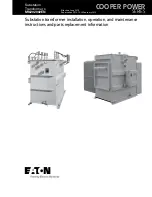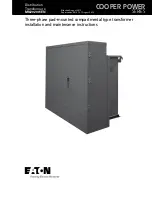
6
FT-1802M O
PERATING
M
ANUAL
A
NTENNA
C
ONSIDERATION
The
FT-1802M
is designed for use with antennas presenting an impedance of near 50 Ohms
at all operating frequencies. The antenna (or a 50 Ohm dummy load) should be connected
whenever the transceiver is turned on, to avoid damage that could otherwise result if trans-
mission occurs accidentally without an antenna.
Ensure that your antenna is designed to handle 50 Watts of transmitter power. Some mag-
netic-mount mobile antennas, designed for use with hand-held transceivers, may not be
capable of withstanding this power level. Consult the antenna manufacturer’s specification
sheet for details.
Most all FM work is performed using vertical polarization. When installing a directional
antenna such as a Yagi or Cubical Quad, be certain to orient it so as to produce vertical
polarization, unless you are engaged in a special operating situation where horizontal polar-
ization is used. In the case of a Yagi antenna, orient the elements vertically for vertical
polarization; for a Cubical Quad, the feedpoint should be at the center of one of the vertical
sides of the driven element (or at a side corner, in the case of a diamond-shaped “Delta
Loop”).
Excellent reference texts and computer software are available for the design and optimiza-
tion of VHF antennas. Your dealer should be able to assist you with all aspects of your
antenna installation requirements.
Use high-quality 50 Ohm coaxial cable for the lead-in to your
FT-1802M
transceiver. All
efforts at providing an efficient antenna system will be wasted if poor quality, lossy coaxial
cable is used. Losses in coaxial lines increase as the frequency increases, so an 8-meter-long
(25’ coaxial line with 1/2 dB of loss at 29 MHz may have a loss of 1.8 dB or more at 146
MHz; choose your coaxial cable carefully based on the installation location (mobile vs.
base) and the overall length of the cable required (for very short runs of cable in a mobile
installation, the smaller, more flexible cable types may be acceptable).
For reference, the chart at the right shows ap-
proximate loss figures for typically-available
coaxial cables frequently used in VHF instal-
lations.
In outdoor installations, be certain to weather-
proof all connectors thoroughly, as water en-
tering a coaxial cable will cause losses to es-
calate rapidly, thus diminishing your commu-
nications effectiveness. The use of the shortest
possible length of the highest quality coaxial
cable that fits within your budget will ensure the best performance from your
FT-1802M
.
I
NSTALLATION
C
ABLE
T
YPE
RG-58A
RG-58 Foam
RG-213
RG-8 Foam
Belden 9913
Times Microwave LMR-400
7/8” “Hardline”
L
OSS
: 144 MH
Z
6.5
4.7
3.0
2.0
1.5
1.5
0.7
Loss in dB per 30 m (100 feet) for
Selected 50-Ohm Coaxial Cables
(Assumes 50-ohm Input/Output Terminations)
Loss figures are approximate; consult cable manu-
facturers’ catalogs for complete specifications.









































